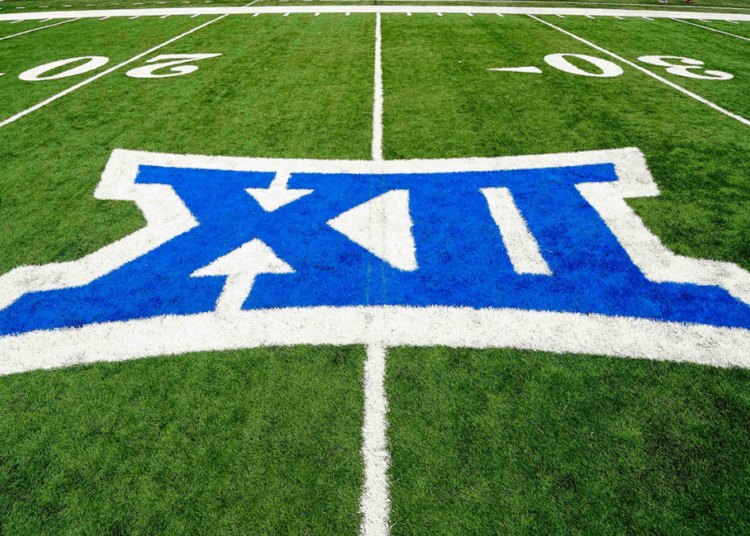When Big 12 presidents and athletic directors begin meeting Thursday at the Dallas-Fort Worth International Airport Grand Hyatt, might as well bring your popcorn.
On the agenda is Gonzaga’s potential membership in basketball. That alone has realignment implications beyond the Big 12. There will also be some discussion about the possible early exit of Texas and Oklahoma for the SEC.
Going into its first season with new members BYU, Cincinnati, Houston and UCF, the Big 12 will discuss perhaps its only athletic year with 14 teams. That’s a Texas-Oklahoma issue, too.
Expansion is still in play, especially as long as the Pac-12 doesn’t sign a new media rights deal.
Gonzaga’s candidacy
Basketball typically brings about 20% of the value of any media rights deal. That’s why football is so much more important. It’s also why no Power Five conference has a basketball-only member.
But this is Gonzaga, a national power, and this is commissioner Brett Yormark, who is looking to make a mark in his new role and has been pursuing the school as a basketball-only addition. (The Bulldogs do not play football.)
After spending 43 years in the mid-major West Coast Conference, there are indications Gonzaga wants to play up a level of competition — and get paid for it. Numerous reports have the West Coast power at least considering its options with the Big 12, Pac-12 and Big East all potential landing spots.
“I would assume if [the Big 12] wanted Gonzaga, they’d have Gonzaga,” a person familiar with media rights deals told CBS Sports.
Maybe. On the school’s end, the decision is said to be largely up to coach Mark Few, who has guided the Zags since 1999. The program is currently in the middle of rights deal with ESPN and CBS that expires in 2026-27.
On the Big 12 end, Yormark has tried to sell his ADs on the concept of a basketball-only member. They have previously seen a presentation regarding Gonzaga’s membership, but it didn’t include any financial details. Don’t be surprised if the ADs have sought to price Gonzaga’s inclusion with league media consultant Endeavor.
“I think that’s probably the lesson that I get taught over and over is, we underappreciate the power of our brand nationally,” Gonzaga AD Chris Standiford told the AP in December.
Gonzaga has negotiated getting a weighted share of NCAA Tournament revenue from the WCC since it is far and away the league’s most consistent postseason performer. From 1999 to 2019, Gonzaga produced more than 70% of the WCC’s 75 “units” — revenue that comes from the NCAA for each tournament victory.
In the Power Five, most (if not all) tournament revenue is distributed evenly among schools by conferences.
The attraction between the two parties is obvious. The Big 12 already is the best basketball league. With Gonzaga, it would get even stronger. Membership would insulate the Zags in case the tournament field grows and the likes of the WCC lose automatic qualifier status. That was speculated when the NCAA Transformation Committee released its recommendations last month.
In return for bringing its brand, Gonzaga would get security and access to NCAA Tournament revenue that surpassed $32 million in 2020. The WCC and Gonzaga have remained tight-lipped about what the league and program are currently making in media rights revenue.
“Any money they get [from the Big 12] has to be more than they’re making,” one industry insider said.
As for the financial impact, Gonzaga wouldn’t get anywhere near a full share of Big 12 revenue that now averages $31.66 million annually. Some see college basketball increasing in value down the road because of streaming. More interest from streaming means more money.
The current dilution comes from an oversaturation. With 363 Division I teams, there are too many televised games that don’t mean anything.
The biggest hang-up may be what to do with Gonzaga’s minor sports. It’s unlikely the WCC would allow them to remain in the conference with basketball not included. Joining the Big 12, if even a possibility, would create significant travel expenses with teams stationed everywhere from Florida to West Virginia to the West Texas.
In 2019, when Gonzaga renegotiated its deal, it used suitor Mountain West as leverage. Now the interested parties are bigger, better and richer.
What about the Pac-12?
Geographically, the Pac-12 makes the most sense for Gonzaga. But the league remaining unsettled in several key areas may drive Gonzaga, and some of the Pac-12’s own schools, to the Big 12.
Pac-12 presidents and ADs concluded a regularly scheduled Monday meeting with no resolution in its ongoing media rights negotiations. The Pac-12 needs that to be settled before proceeding with anything else.
The current media deal with Fox and ESPN expires July 1, 2024. It is extremely late in the negotiating process (17 months out) to still be this far away from an agreement given there is an expiring deal.
“I wouldn’t say [it’s] a concern,” said a Pac-12 AD. “We’re in a process. … Panic or impatience isn’t going to make a difference.”
Meanwhile, the Big 12 — Yormark, specifically — remains interested in those Four Corners schools: Arizona, Arizona State, Colorado and Utah. While Pac-12 programs have declared various levels of loyalty during this uncertain period, the longer these negotiations last, the more questions will enter the minds of members. Several times, Yormark has said publicly he wants a West Coast presence to spread his conference across all four time zones.
Beyond Gonzaga and those Pac-12 schools, San Diego State remains a Pacific option for the Big 12. A new Pac-12 deal could come in the first quarter of 2023 involving ESPN and Amazon.
The Texas, Oklahoma situation
Texas and Oklahoma recently made an offer to the Big 12 and Fox to leave the league one year early for the SEC, sources told CBS Sports this week. It was rejected. The nature of the offer was not clear.
CBS Sports previously reported the Big 12 rightsholder would have to be made whole for losing the Longhorns and Sooners early from its programming lineup. That could involve a series of nonconference games involving both schools being played in Big 12 stadiums once Texas and Oklahoma join the SEC.
Fox and ESPN hold the linear broadcast rights to the Big 12 through 2024-25. ESPN owns 63% of the value from the new $2.3 billion deal that begins in 2025. As such, it gets top picks with the four best football games each season, six of the top eight, eight of the top 12 and 12 of the top 20, according to SportsBusiness Journal. Fox, which owns the remaining 37% of the deal, receives 26 games per season. It is not clear whether Fox would get access to some of those ESPN picks if a deal was struck.
There was speculation that Tuesday’s release of the 2023 Big 12 schedule was connected to the Texas-Oklahoma issue. In other words, nothing could happen until it was known when the programs would leave the league.
Not true. The league faced a deadline of early February from their rightsholders to get the schedule done. Fox and ESPN needed to start scheduling games themselves.
Meanwhile, time is running out for a potential early exit. As CBS Sports reported, Texas and Oklahoma want to leave early, but the complications are numerous.
The pair first made it known in August 2022 they wish to leave the Big 12 for the SEC at the conclusion of the 2023 season. For now, they are compelled by the current media rights deal to stay through the 2024 campaign before moving on.
Read the full article here


























